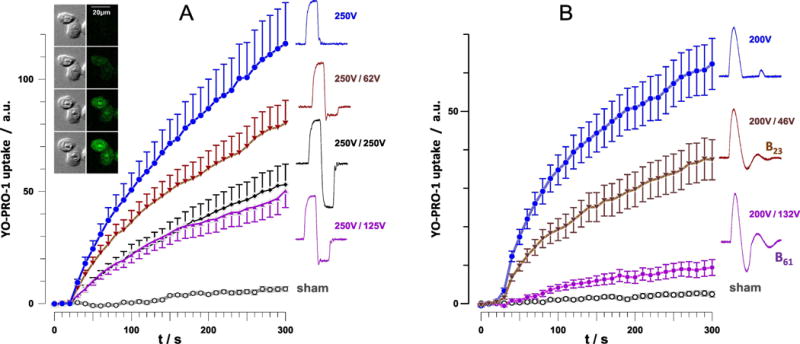Fig. 2.

Time course of YP uptake in CHO cells after permeabilization by trapezoidal nsEP (A) and NEFO (B). Cells were exposed starting at 28 s into the experiment to a train of 4 pulses at 9 kV/cm, 2 Hz, 230 ns phase duration (A) or to a train of 10 NEFO (unipolar, B23, and B61) at 7 kV/cm, 2 Hz (B); see text and Fig.1 for more details. nsEP and NEFO shapes and voltages of the 1st and 2nd phases are provided next to the plots. Mean +/s.e. for n=17-23 (A) or n=20-40 (B). All bipolar pulse treatments caused significantly less membrane permeabilization than unipolar pulses (p<0.01). The inset shows representative DIC (left column) and YP fluorescence images at 0, 60, 180, and 300 s (from top to bottom). The cells were exposed to 4 unipolar, 230 ns, 9 kV/cm nsEP at 28 s.
